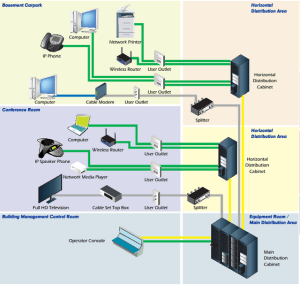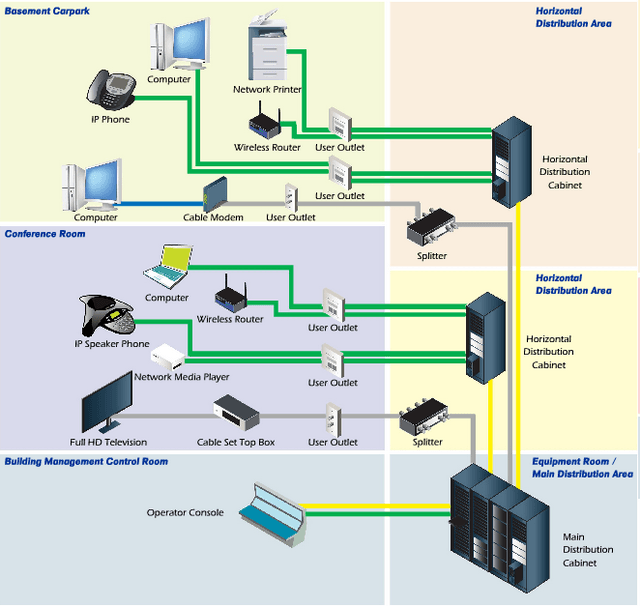What is “Structured Cabling”?
 Structured cabling is a telecommunications cabling infrastructure consisting of a number of standardized smaller elements called subsystems.
Structured cabling is a telecommunications cabling infrastructure consisting of a number of standardized smaller elements called subsystems.
Structured cabling falls into five subsystems:
- A Demarcation point is the connection point where the telephone company network ends and the customer’s on-premise wiring connection begins.
- Equipment or Telecommunications Rooms contain equipment and wiring points that serve the users inside a building.
- Vertical or Riser Cabling connects between the equipment/telecommunications rooms on different floors.
- Horizontal wiring connects telecommunications rooms to individual outlets or work areas on the same floor through conduits or ceiling spaces.
- Work-Area Components connect end-user equipment to outlets of the horizontal cabling system.
The most commonly used cables are Category 5e (CAT5e), Category 6 (Cat6), fiber optic cabling and modular connectors. Standards define how the cable is laid to meet the needs of the customer. A central patch panel, (usually 19 inch, rack-mounted) is used with each outlet, then patched into a rack-mounted switch for network use or, alternatively, into an IP or PBX (Private Branch Exchange) telephone system patch panel.
Lines patched as data ports into a network switch require simple straight-through patch cables at each end connected to a computer. Adapters for voice patches to PBXs are not required in the U.S. as the commonly used plugs for telephone connections are physically and electrically compatible. Neither are color-coded patch panel cables necessary for identifying the connection type, except in the demarcation wall field.
Cabling standards require all eight conductors in Cat5/5e and Cat6 cables to be connected, so there is no “double-up” by using one cable for both voice and data. IP phone systems, however, can run the telephone and the computer on the same wires.

